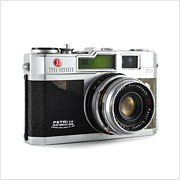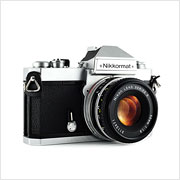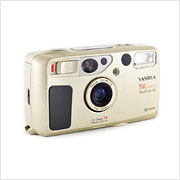The Nikon F was Nikon’s very first single-lens reflex camera which, arguably, single-handedly ushered in a golden age for Japanese camera manufacturers and SLRs in general. The legendary F was the first SLR system to gain widespread popularity among professional photographers who in turn used it to document everything from armed conflicts to rocket launches. Its modular design mean that there were a multitude of different viewfinders (mine has a black Photomic FTn meter finder installed), backs, grips, and, of course, lenses available. The F is also extremely well-built and incredibly durable, attributes that helped it become the first 35mm SLR to go into lunar orbit aboard the Apollo 15 space capsule and gave rise to a long line of tough, space-faring professional-grade Nikons that continues to this very day.

























